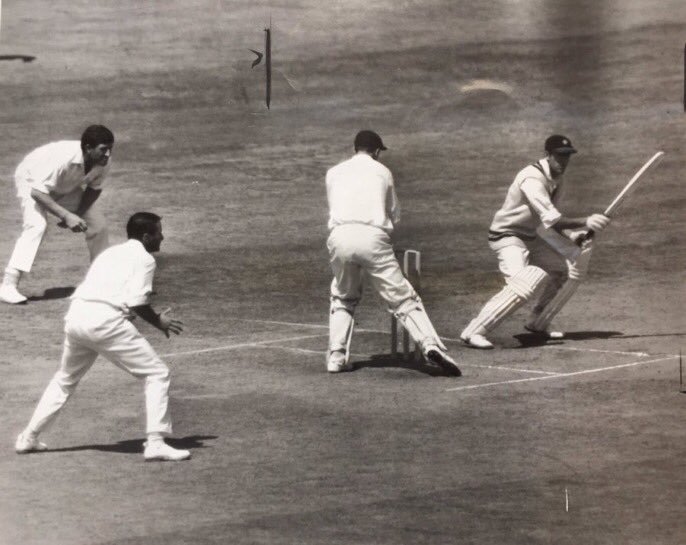I was saddened to hear about the death of The Nawab Tiger Pataudi. The cricket world has lost a good ‘un ‘in tiger passing. I always found him wonderfully entertaining company and I don’t ever have the recognition he served as an Indian cricketer. He was a damned fine batsman and an insightful captain who had a great understanding of the value of good spinners.
On India’s 1967-68 tour of Australia, he played two innings at the Melbourne Cricket Ground that would’ve been exceptional if he’d had all his faculties and full fitness. As it was Tiger brilliantly played and scored 75 and 85 batting on one leg and with only one good eye against some exceptional pace bowling. Cyclops couldn’t have done a better job.
In spite of a pulled hamstring, Tiger played in the Test match because his team was in disarray and needed him. He batted at seven in the first innings with India floundering at 5/25. He couldn’t have a runner and he could only perch on the back foot because his right leg was the good one but the bowlers were misguided if they thought he was batting under a handicap.
Under gloomy skies and confronted by the fiery fast bowling of Australian rocky Graham McKenzie he propelled India’s total to a more respectable 173. Two things stood out during that innings; a couple of shots he hit to the boundary and the singular bat he used each time he resumed his innings after a break in play.
The first memorable shot was a pick-up off his toes from a Dave Renneberg delivery and the ball landed about a meter inside the mid-wicket boundary. The second sizzling shot was when he hit McKenzie straight back over his head and it bounced once before crashing into the fence.
Then there were the five different bats and not one because of breakage.
In the dressing room that evening, I asked Tiger why he used a different bat each time. He replied: “I only brought a pair of boots, socks, creams, and a shirt on tour, so I used someone else’s gear. Every time we went out after a break I just picked up the bat nearest the door.”
That same evening I asked him what he did for a job when he wasn’t playing cricket; “Ian, I’m a Prince.”
Not being familiar with the concept I continued to prod him about what he did between the hours of nine and five. Exasperated, he replied: “Ian, I’m a bloody Prince.”
However, he was not one to leave the fielding to others manner of a Maharajah. In a documentary on India’s Test cricket history, Tiger was lauded as being one of the players, who lifted India’s fielding standards. “Yes,” he replied, “before I came along the batsmen used to go into the slips and drop all the catches.” His quick thinking wasn’t restricted to captaincy and interviews.
On the charter flight from Chandigarh to Lahore for the 1996 World Cup final, I was begged by – Mark Mascarenhas to grab Shane Warne and sit in first-class despite only holding economy tickets.
Mark had discovered there were twenty first-class seats on the flight and only sixteen officials. Along – with Ravi Shastri, Mark was seated — in first class and he figured if Warne was there then he wouldn’t be ushered back into the economy.
Hearing this, Mansoor Ali Khan Tiger Pataudi, seated in the first row of economy class with his spouse, asked the only official, who was seated on the flight at the time, if he could see his boarding pass. After looking at the pass with a red border for a few seconds, Tiger with the deftness of a card sharp flipped his economy pass over to hide the green border and handed it to the officials.
A few seconds later armed with one valid pass both Tiger and his wife moved into first-class seats where they remained for the duration of the journey. Tiger was a superb mixture of larrikin and worldliness with a dry wit thrown in. With his passing, that breed of Tiger is now extinct.



